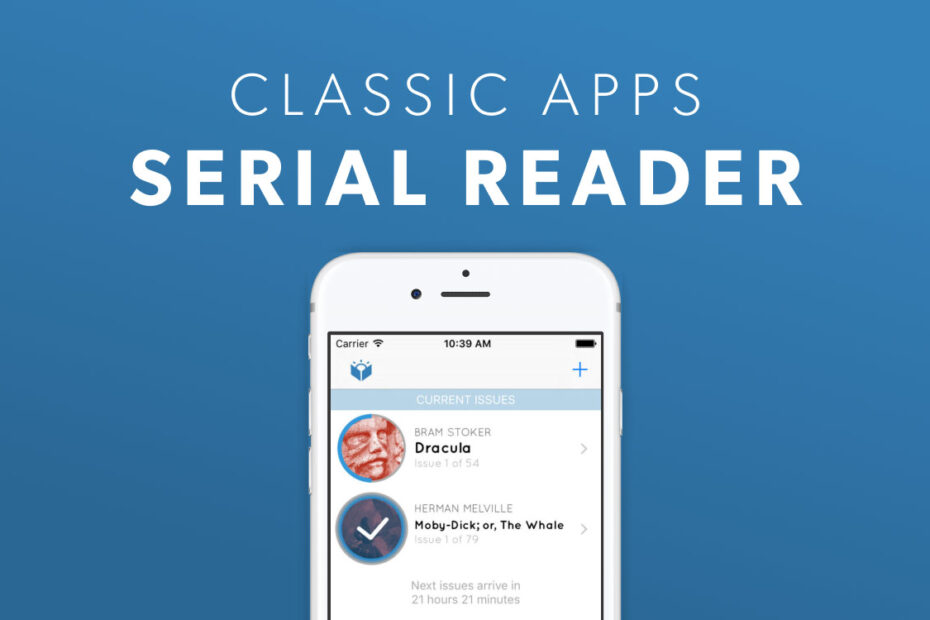A classic app for reading the classics
This latest entry in our classic app series rethought dusty old tomes for the modern day, serving them up in bite-sized portions.
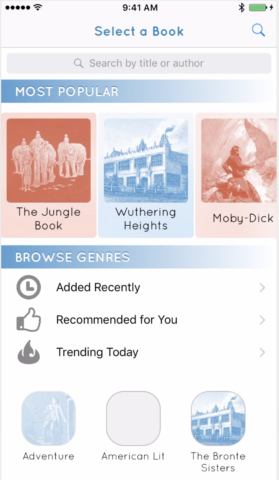
An early version of Serial Reader.
What was Serial Reader?
An ebook reader, for reading public domain books, from the likes of Frankenstein to The Complete Sherlock Holmes. But unlike previous classic app Eucalyptus, Serial Reader was less concerned with aping the feel of reading paper and more interested in fitting reading into a busy schedule.
Why was it a classic?
In short, serialized delivery. Other readers would have you download a classic, discover it had many hundreds of pages, and put off reading it forever. Serial Reader cunningly split each book into bite-sized issues that could each be read in under 20 minutes – all via a minimal, usable reading view.
Where is it now?
Serial Reader remains available to this day. For free, you get access to all the books and the delivery feature. The premium upgrade costs just $2.99/£2.99 and unlocks cloud sync, ePub import, issue pause, skip-ahead, and custom highlights and notes.
Visit the Serial Reader website or get Serial Reader (free) from the App Store.
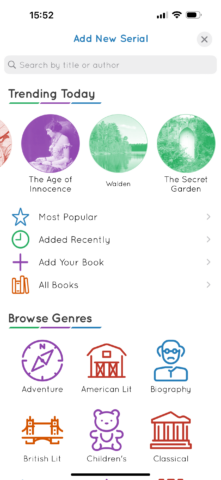
Serial Reader as it looks today.
Q&A: a brief history of Serial Reader
We speak to Serial Reader creator Michael Schmitt about how an app can help you become a better reader.
What sparked Serial Reader? Were you lacking time to read the classics yourself?
Michael: Actually, my initial goal was to slow down my reading! I’d developed a bad habit of skimming and would miss details. I remember being blown away by a professor crying over a passage in Willa Cather’s My Antonia in class and not even remembering reading it.
Years later, I wanted to reread the book and pick up what I’d missed. Rather than enforce self-discipline, I built the Serial Reader prototype, which forced me to read a small section of My Antonia every day. I found this rewarding. It helped break my habit and also get through more daunting works!
What drove the features in the first public version of the app?
I focused on turning my early prototype into a minimal viable product – which was more bare-bones than it should have been. It’s more fun building something you know others are using and so I tend to rush to version one. So Serial Reader initially just listed your books, the issues within each book, and available titles, along with giving you a reading screen with a few fonts.
Apple featured it shortly after launch, and so it was a rush from there to build out the requested features like cloud sync, highlighting, dictionary access, and a version for Android.
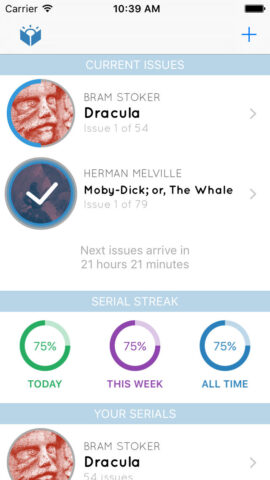
Circles depicting books in Serial Reader.
The bright icons feel enticing, rather than the app inviting you to read dusty old volumes. Where did this style arrive from?
I wanted Serial Reader to be accessible and visually distinct. I knew the design would be minimal, but it felt important to inject color and personality. So I established a set of bright hues and used circles to represent books, rather than more typical rectangles. I then added fun elements like the congrats messages that pop up when you finish an issue.
What have been the most important features added since those early days – and how do you decide what makes the cut?
Adding your own book files to be auto-serialized was huge. For most of Serial Reader’s history, I manually divided classic books into issues, and slowly built automations to help speed along the process. In letting people add their own books, I gambled these automations were ready to handle the process completely and give everyone an enjoyable reading experience.
As for what makes the cut, much of that’s down to what I feel is within the boundaries of Serial Reader’s core focus and that I’d enjoy using. It’s hard to make a great feature if you’re not enthusiastic about it yourself!
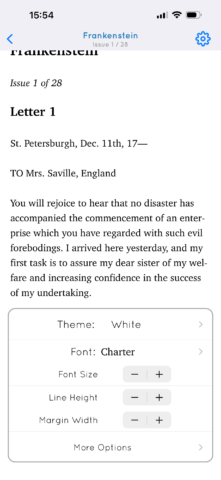
The current reading view.
How do you decide which features to keep free? Even in its free version Serial Reader feels premium, which is presumably so the books are readily available to anyone with a phone?
Yes, that’s one of the bigger considerations – the books are public domain, and I’m wary of limiting access to them. So I try to ensure premium features are tied to ongoing costs – such as running a cloud server – or are optional extras. Ultimately, Serial Reader is a hobby and source of happiness for me. Revenue from premium features is designed to cover costs and provide positive feedback that folks are enjoying what I’m doing.
Finally, can you reveal anything about Serial Reader’s future? And should we spend the next 235 days reading War and Peace?
I have a large update in the works that will bring a mix of new features, design refreshes, and updates to the app’s structure and pricing. Reading streaks are likely to be included along with new options around issue delivery.
And, yes, I’d encourage everyone to read War and Peace. 235 issues sounds a lot. But once you get into the groove, you’ll enjoy having an engaging story to return to every day over a period of months. Personally, I’m psyching myself up to dig into Middlemarch and its ‘mere’ 146 issues!
